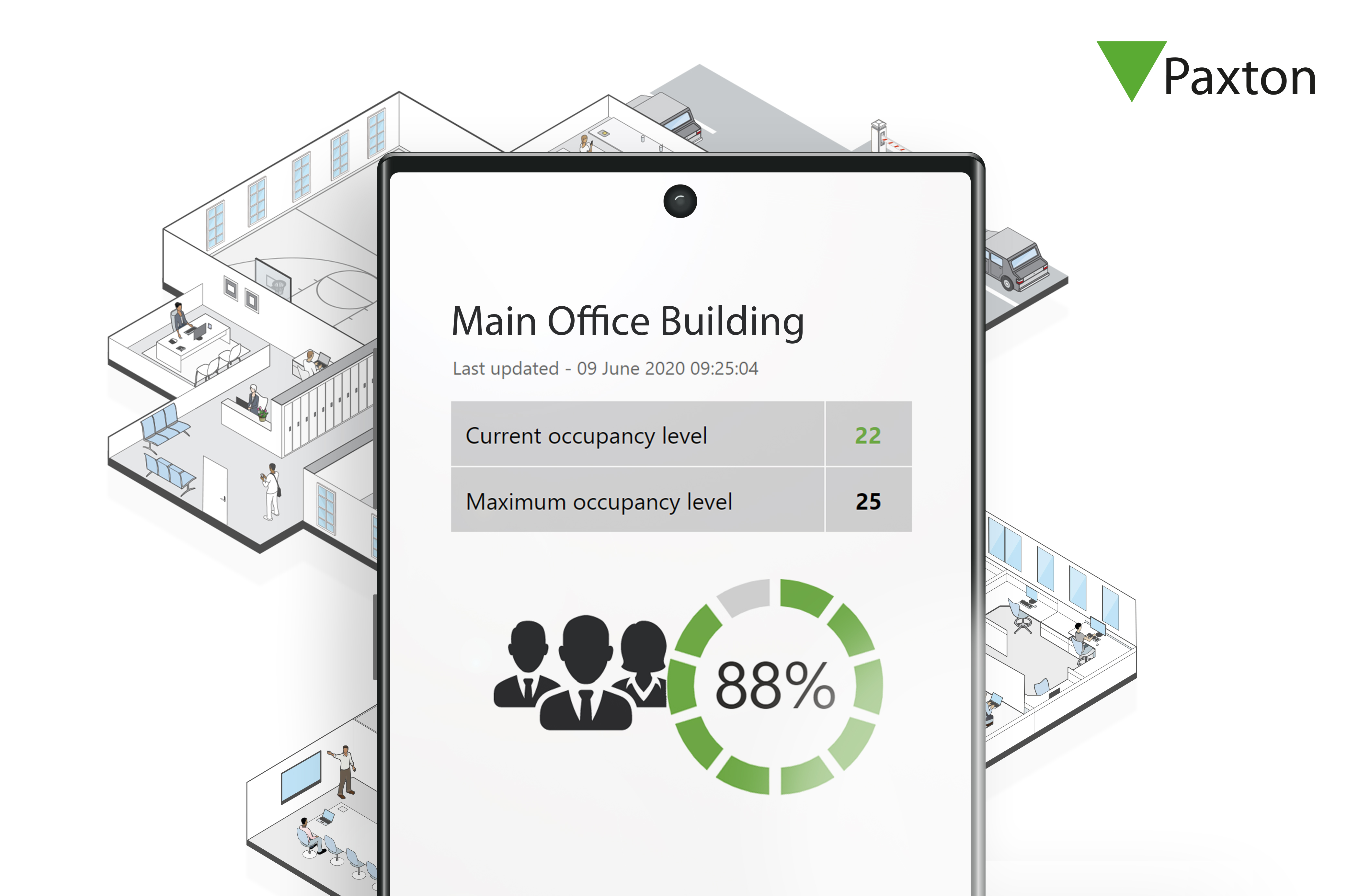Paxton introduce occupancy management and thermal scan integration for Net2 access control
07 July 2020 – Brighton
Paxton have brought new additions to their leading Net2 access control range, helping installers to help their customers ensure their buildings are COVID-secure. The latest version of Net2 – v6.04, has been in rapid development since May and is now ready for installers to download. It features Net2 Occupancy Management which allows you to limit the number of people in any given area; either barring access or sending an email or text to the building manager when a space nears capacity. It works across multiple areas of a site and can be set to operate a one in, one out system to support social distancing measures. In addition to this update, installers who want to use thermal scanning to help limit the spread of the virus can do so with a choice of hardware integrated from Hikvision, Dahua & ZKTeko.
Adam Stroud, Paxton CEO says: “We understand the important part that access control has to play in managing the flow of people around a building in order to support a hygienic environment. In addition, controlling the density of people in any given area is a valuable tool to help businesses of all types to become ‘COVID-secure’. Net2 is the best selling access control system in the UK and so we have developed the new Occupancy Management feature to meet this specific need. For new and existing Net2 customers we hope that this new functionality helps the efforts that we are all making to observe social distancing and keep people safe.”
Occupancy Management* with Net2 v6.04:
- Ensure users maintain a safe social distance by setting and controlling the maximum number of people in any given area
- Real-time visual reports – see live occupancy levels in a clear, web-based visual report from smartphone, tablet, PC or widescreen wall display
- Dynamic control of entry permissions – set alerts and prevent user access when maximum capacity neared or is reached
- Simplified area management – set and manage multiple areas simultaneously, with specific occupancy levels per area
- Support continuous flow of people movement with one-in-one-out user access when people numbers are high
Paxton have also tested a range of thermal scan hardware and use their latest free, 45 minute webinars to take installers through what is available and how to apply it. Paxton reference solutions from Hikvision – Face Recognition Terminal (Minmoe), Dahua – Thermal Temperature Station and ZKTeko – SpeedFace to help ensure health and wellbeing in high security areas and identify people that could be at risk, quickly. However, Net2 will integrate with any thermal cameras that utilise a Wiegand output so installers have even more choice when specifying solutions.
Following the release of the new UK government guidelines in May 2020 – ‘Working safely during COVID-19’ Paxton have been running their ‘Definitive guide to COVID-secure buildings’ to help get the UK back to work safely. The guide involves a live 45 minute webinar which takes installers through the new guidelines as well as a free end-user guide to help customers understand the access control solutions available when updating their buildings.
Gareth O’Hara Chief Sales Officer said: “We’ve had a great response from customers so far, with hundreds joining us in the first couple of weeks. The webinar matches the new guidelines to practical access control solutions that businesses need now. The new Occupancy Management feature in Net2 has been eagerly anticipated and we are looking forward to getting it out there to help with social distancing on sites all across the world. We are continuing to develop Net2 in line with installer feedback to provide even more flexibility for COVID-secure buildings, so watch this space.”
Paxton’s latest webinar, the Definitive Guide to COVID-secure Buildings with Net2 starts on 16 June and run twice daily. Installers can sign up at: https://www.paxton-access.com/our-definitive-guide-to-covid-secure-buildings/
*Net2 Pro software is required to use the Occupancy Management feature.
